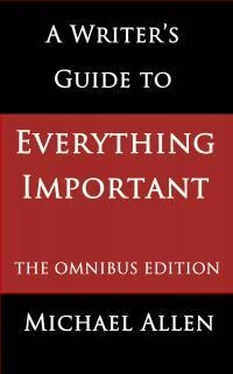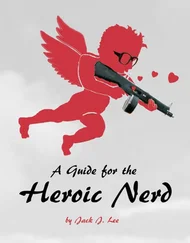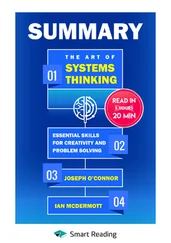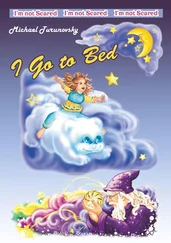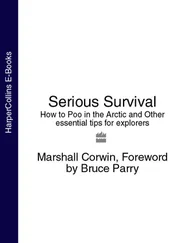The term is pretty much self-explanatory, and at the risk of stating the obvious I will just say that it is at least possible that a character who gives you a first-person account of a series of events may, in fact, be lying through his teeth. The whole story may be a complete fabrication, intended either to entertain or to deceive. This possibility presents a number of interesting opportunities, but I will leave it to you to explore them.
The concept of the unreliable narrator is much discussed in literary circles. Indeed in the Eng. Lit. common rooms of the great universities they speak of little else. But don’t let that put you off.
Another possibility presented by first-person narration is not so much that the narrator is lying, as that he misunderstands completely the meaning of the events that he is witnessing. And, if you can somehow contrive to reveal to the reader that the narrator is drawing entirely the wrong conclusions from the events in which he is involved, then the result can be either comic or tragic, depending on how you handle the material.
This writing business, you will now realise, does tend to get a bit complicated at times. But therein lies the skill, and the interest; and by mastering these skills through practice you will gradually learn how to ensure that your short stories and novels have a bigger impact on the reader – an impact more in line with the one that you have intended.
5.3 The exception to the rule
Soon after drafting this section of the book, I came across an exception to the general rule that scenes written from a major-character viewpoint must of necessity be in the first or third person.
Charles Stross is the author of a number of hard SF books, as the genre seems to be labelled, and in one of them, Rule 34 , he writes in the second-person singular. Here’s an example from the first page of the book:
‘You glance sideways across the desk. Sergeant Elvis – not his name, but the duck’s arse fits his hair-style – is either grooving to his iPod or he’s really customized his haptic interface. You wave at him, and he looks up. “I’ve got to head out, got a call,” you say.’
And so on. I can’t say that I like it, or that I would want to emulate it, but this example proves that something different is often possible.
The same technique could be used for a minor-character scene, discussion of which now follows.
6. The minor-character viewpoint
The third and final angle from which a story may be told is the minor-character viewpoint. It is sometimes referred to as the mystery angle – for reasons which will now be explained.
In a story told from the viewpoint of a minor character, the narrator is a participant in the action, but is more of an observer than a person who makes the key decisions in the story. And a story told from the minor-character viewpoint can be written in either the first or the third person.
Fortunately, we don’t have to go far to find an example of a whole series of stories which are told from the point of view of a minor character. Sir Arthur Conan Doyle provides us with the archetype in the Sherlock Holmes canon.
The Holmes stories, you will recall, are written in the first person by the great detective’s faithful assistant, Dr Watson. And, as Conan Doyle obviously realised at an early stage, the minor-character viewpoint is ideal when the author wishes to maintain a sense of mystery. We, the readers, know no more than Watson is able to tell us, and often that is not very much. Holmes sits and puffs his pipe, and comes to amazing conclusions, but we, like Watson, stumble along in Holmes’s wake, wondering what on earth he is up to now.
Countless other crime writers have adopted the same technique. S.S. Van Dine wrote a series of mystery novels which are related by the detective’s secretary. Rex Stout’s books about the eccentric detective Nero Wolfe are recounted by Wolfe’s faithful sidekick, Archie Goodwin. And so on.
The minor-character angle has other uses, however. Suppose you were to write a novel in which the main character is going to be driven insane, or commit suicide, as a result of the impact of certain tragic events. Such a story could possibly be told by a minor character. Through the eyes of such a minor character, the reader would share the impact of the events on the narrator, and would also be told of the much greater effect that they have on the major character.
6.1 Yet more on author comment
As with the other two viewpoints, the writer of a story told from the minor-character viewpoint can influence the reader’s attitudes towards all the characters in the story by the extent to which, in the third person, the author presents information objectively or subjectively.
A minor-character first-person narrator can similarly present his descriptions either subjectively or objectively, and can present his own conclusions about what is going on. This latter choice will tell the reader much about the minor character as well as the others who are being described.
At which point, you may well need to take note of the advice in the section 7, immediately below.
7. Don’t beat yourself up
In order to make this account of the various fictional viewpoints as complete and authoritative as possible, I have included in the section on each of the three principal viewpoints some account of ‘author comment’ (see sections 4.1, 5.1, and 6.1.)
This issue is certainly important and therefore worth consideration, but if you find that trying to get your head round it simply adds more confusion than it provides enlightenment, then I suggest that you stop worrying about it at least until you come to revising your first draft of a complete short story or novel.
If you concentrate on just making the right choice as between omniscient, major character, and minor character, and choosing the first or third person where necessary, then you will be 90 per cent there.
As for the rest, just let nature takes its course until you come to look at a complete story. And even then I shan’t be too hard on you if you decide to wait until you have written a million words of fiction before getting too fancy-pants about it.
8. Choice and consistency
I appreciate that by now you may have the impression that choosing the best viewpoint to use for a novel, or for a chapter within a novel, is a decidedly tricky business. But it isn’t really.
If you are planning to write fiction at all, then you will inevitably have some sort of an outline in mind. Have a look at that material, and as often as not you will find that the ‘best’ viewpoint pretty much suggests itself. The choice is frequently instinctive, and may well be dictated, or at least suggested, by the nature of the material and by what is common in the genre.
However, if you get really stuck, then here is a handy summary of the decisions that you need to make. In a novel, you can change the viewpoint every time you start a new chapter. In fact, if you do switch to a new viewpoint, you should almost certainly start a new chapter, to send a signal to the reader.
Here’s the list of things to consider, chapter by chapter, as you go through your book. I emphasise again, the choice of viewpoint can, and probably should, be made separately for each separate chapter.
1. Are you going to use the omniscient viewpoint, which enables you to enter the heads of any and all characters if you so wish – or are you going to write from the point of view of one major character, or one minor character?
2. If you are using the major-character viewpoint, or the minor-character viewpoint, are you going to write in the first person or the third person?
3. Whichever viewpoint you choose, are you going to describe external and visible events only, or are you going to describe the internal thoughts and feelings of any of the characters?
Читать дальше
